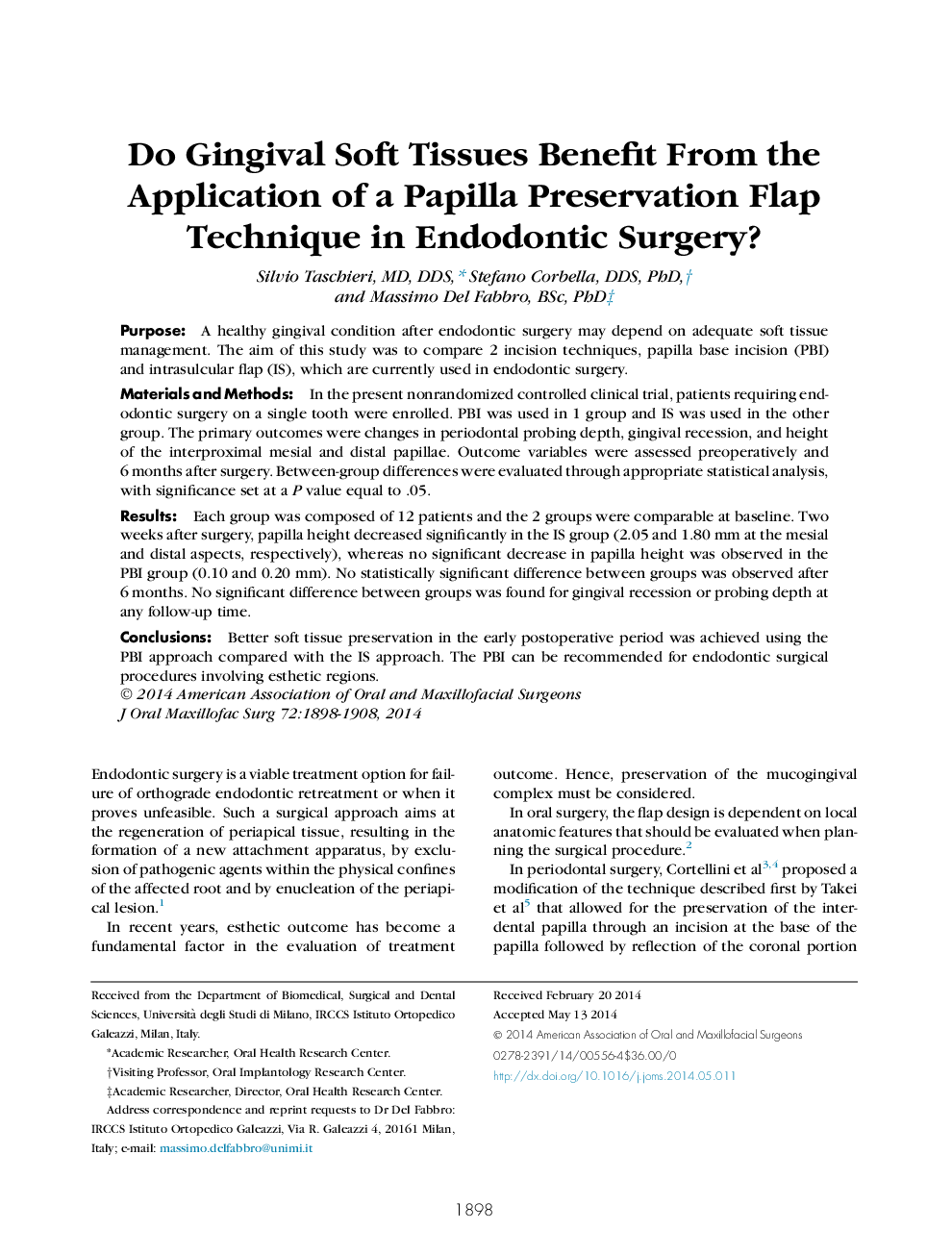| Article ID | Journal | Published Year | Pages | File Type |
|---|---|---|---|---|
| 3153455 | Journal of Oral and Maxillofacial Surgery | 2014 | 11 Pages |
PurposeA healthy gingival condition after endodontic surgery may depend on adequate soft tissue management. The aim of this study was to compare 2 incision techniques, papilla base incision (PBI) and intrasulcular flap (IS), which are currently used in endodontic surgery.Materials and MethodsIn the present nonrandomized controlled clinical trial, patients requiring endodontic surgery on a single tooth were enrolled. PBI was used in 1 group and IS was used in the other group. The primary outcomes were changes in periodontal probing depth, gingival recession, and height of the interproximal mesial and distal papillae. Outcome variables were assessed preoperatively and 6 months after surgery. Between-group differences were evaluated through appropriate statistical analysis, with significance set at a P value equal to .05.ResultsEach group was composed of 12 patients and the 2 groups were comparable at baseline. Two weeks after surgery, papilla height decreased significantly in the IS group (2.05 and 1.80 mm at the mesial and distal aspects, respectively), whereas no significant decrease in papilla height was observed in the PBI group (0.10 and 0.20 mm). No statistically significant difference between groups was observed after 6 months. No significant difference between groups was found for gingival recession or probing depth at any follow-up time.ConclusionsBetter soft tissue preservation in the early postoperative period was achieved using the PBI approach compared with the IS approach. The PBI can be recommended for endodontic surgical procedures involving esthetic regions.
